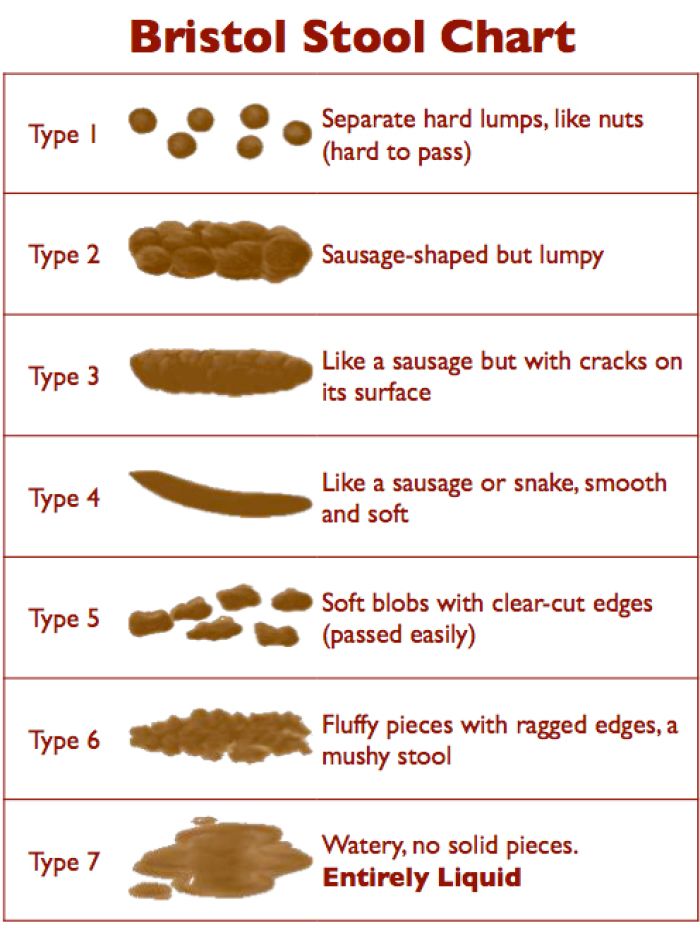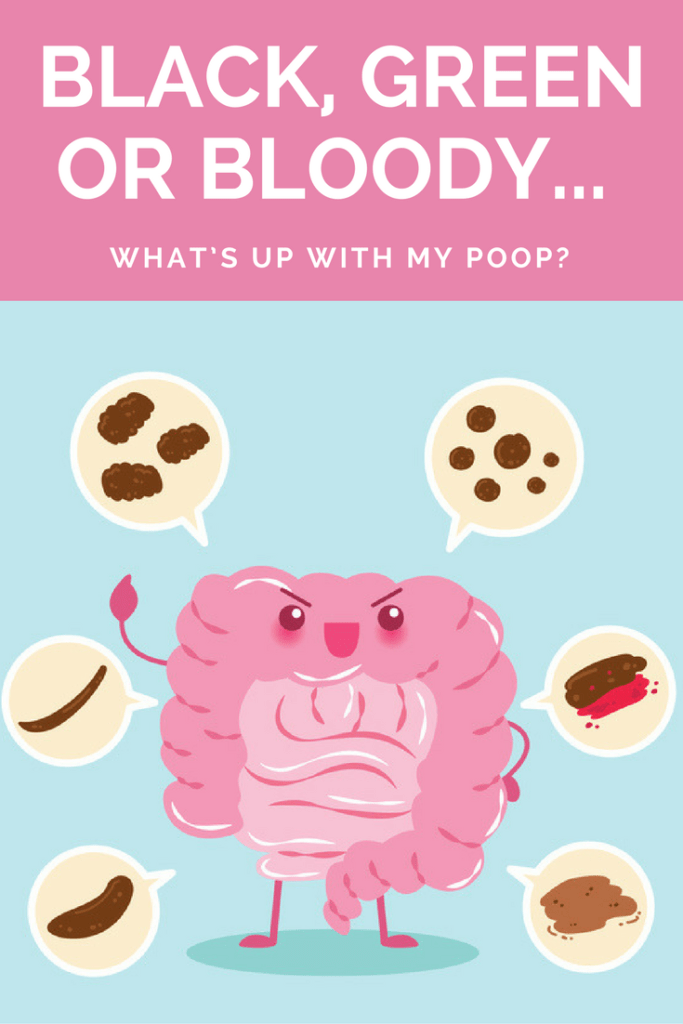The color of your poop can provide you with useful information about what’s going on inside your body.
While some color changes are simply related to the color of food you ate, other changes may indicate severe medical conditions.
This article explains potential reasons for your poop color.
How Is Poop Formed?
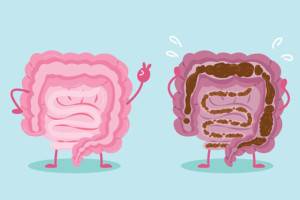
Poop, also referred to as feces or stool, is the solid waste humans eliminate.
The food we eat goes from the mouth to the stomach, the small intestine and eventually the large intestine and rectum. Food is mostly digested and absorbed upon reaching the large intestine, where it’s referred to as chyme.
The end-product of digestion is poop, which is stored in the rectum until it’s ready for elimination. Poop consists of mostly water as well as bacteria, protein, fiber, fat, and other organic solids. The amount of each of these components varies based on the individual’s diet and health status.
Keep in mind it takes about 18 to 72 hours for food to become poop. This process, also known as intestinal transit time, may be shortened in cases of diarrhea and lengthened in cases of constipation.
Summary: Poop is the eliminated product of digestion and includes mostly water as well as a mixture of organic solids.
What’s Considered “Normal” Poop?
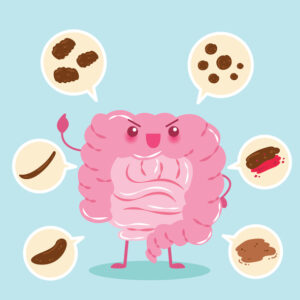
Normal poop can say a lot about your health status.
It’s typically described as light to dark brown in color and semi-solid with a light mucus coating. The brown color comes from bile, bilirubin particles, and dead red blood cells. Additionally, it contains about 75% water and appear like a soft and smooth sausage.
Most refer to the Bristol Stool Scale for help classifying characteristics of poop. Essentially, the amount of time chyme spends in the large intestine impacts how the final product appears and how easy it is to pass. A healthy goal is type 4 on the chart below.
Bristol Stool Chart (scale). Image source. Click to enlarge.
Other features indicating normal or healthy poop include a “S”-shape, 1 to 2 inches in diameter, and a “natural” odor. There is no set standard for normal bowel movement frequency, which can range from 3 per day to 3 per week.
Summary: Normal poop is light to dark brown and ideally appears as type 4 on the Bristol Stool chart, reflecting a smooth, soft sausage or snake.
Why Is My Poop Green?
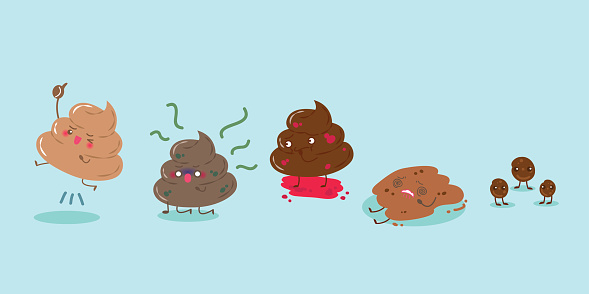
Poop may appear green for a variety of reasons.
Green Foods
Consuming high amounts of foods with green pigments may produce green colored poop.
Green pigments may come from natural sources like chlorophyll in asparagus or leafy greens. Additionally, green pigments may come from artificial sources like green food coloring in processed foods and candies.
Excess Bile
It’s important to note that bile, the fluid that helps with fat digestion, naturally has a green-yellow hue.
Excess bile in the poop also produces a green color. This may occur when there is inadequate time for the body to reabsorb bile and therefore it ends up being excreted.
Conditions that can speed up intestinal transit time like inflammatory bowel disease (IBD), celiac disease, irritable bowel syndrome (IBS) may all result in green poop. For example, those with a food intolerance may get green poo after eating high FODMAP foods.
Additionally, excess use of laxatives, caffeine and alcohol produce a similar effect (1).
Changes to Microbiome
Factors that change the bacterial composition of the gut can also change the color of poop, typically to green.
Parasitic, viral and bacterial infections, medical procedures, and antibiotic use all potentially impact the microbiome (2).
Summary: There are numerous reasons for green poop including consuming high amounts of green foods, excess bile, and changes to the gut microbiome.
Why Is My Stool Yellow?
Yellow stool is often a red flag for poor fat digestion.
One may experience greasy and foul smelling poop along with the yellow color. These are all signs that the body struggles to properly digest and absorb fats.
Conditions impacting the pancreas like celiac disease, cystic fibrosis, chronic pancreatitis, and/or pancreatic cancer all potentially reduce the pancreas’ ability to manufacture and release digestive enzymes. Without adequate flow of these enzymes, fat doesn’t breakdown and absorb normally (3).
In addition to enzymes, the body also needs bile to digest fats. Liver cancer, hepatitis, cirrhosis, and gallstones (and gallbladder removal) can all potentially reduce bile production and/or flow, resulting in poor fat digestion and yellow stool.
Summary: Yellow poop is often accompanied by a greasy appearance and foul odor due to poor fat digestion. This may occur due to conditions that impair the pancreas and/or liver, which reduces the digestive enzymes and bile necessary for fat digestion.
Why Is My Stool Black?
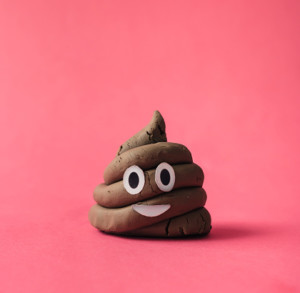
Black stools can simply reflect food intake, or more serious issues such as gut injuries.
Black Foods
Foods that may produce a dark black hue to your poop include blueberries, blackberries, black licorice, and even deep red foods like beets, red gelatin and fruit punch.
If you are worried, be sure to first thoroughly review your diet for potential darkly hued foods that may contribute to black poop.
Blood
Depending on where the bleeding occurs, it can make poop appear black or tarry.
A gut injury occurring higher up in the digestive tract (i.e. the esophagus to the lower small intestine) creates the appearance of dark black or tarry poop because the blood is broken down by digestive enzymes.
Additionally, reduced blood flow to the digestive tract can also create this appearance.
There is more information about blood in the stool in the next section.
Medications & Supplements
Iron supplements, bismuth subsalicylate products (i.e. Pepto-Bismol and Kaoepectate), and other medications may cause black poop.
Cancer
Stool color alone is not a sign of cancer; however, it is important to inform your doctor and seek further workup.
Summary: Dark black poop is typically a sign of blood in the stool, but could also be related to diet, medications and supplements.
Why Is There Blood In My Stool?

Blood in stool is typically related to conditions that cause gut injuries, but can also be related to your diet.
Red Foods
Foods that may create a similar red-blood appearance in your poop include those with natural and artificial red hues.
These include processed foods, juices, red gelatin, and candies as well as beets, cranberries, and tomato products. Review your diet for potential sources of red color contributing to a bloody appearance of your poop.
Gut Injuries
The brightness of the blood relates to the potential location of the gut injury.
Injuries on the lower intestines often produce a bright red color, whereas injuries on the upper intestine produce a darker red and sometimes black color.
Additionally, intestinal transit time impacts the shade of blood in poop. When things move through the gut faster, this usually produces a brighter red color (4).
Intestinal injuries can be caused by numerous factors:
- Hemorrhoids: enlarged blood vessels in or around the anus
- Colon polyps: a small clump of cells that form in the colon
- Anal fissures: a tear in the lining of the anus
- Diverticular bleeding: diverticula (small pouches) in the colon rupture, leading to diverticulitis
- Tumors: abnormal growth of tissue, may be benign or malignant
- Ulcers: intestinal sores common in IBD, may also be present in the esophagus, stomach, duodenum, colon or rectum
- Excessive straining: too much force to relieve solid waste
- Arteriovenous malformations: arteries or veins rupture due to abnormal communication
- Low platelet count: reduced ability to form blood clots
Summary: Blood in poop may simply be related to a red appearance from foods, or due to a more serious gut injury. The brightness of the blood reflects where the injury may be located.
Why Is There Mucus In My Stool?

A small amount of mucus is your stool is normal, but when you notice too much it may indicate a problem.
Mucus is secreted to help moisten and lubricate the inside of the colon. This helps poop to pass through easily, with minimal straining.
If you notice increased amounts of mucus or accompanied symptoms like blood, abdominal pain or changes in stool consistency, then this should warrant further workup with your doctor.
Ulcers along the intestines produce mucus. Therefore, conditions that produce ulcers like Crohn’s, ulcerative colitis or even cancer may be present.
Additionally, diarrhea may result in excess mucus, so intestinal infections and IBS could also be potential causes.
Summary: While a little mucus is normally present in poop, too much or in addition to other symptoms may be a sign of more serious issues like IBD, cancer, infections or IBS.
When Should I Be Concerned?
Changes in stool color happens to most of us and is typically not a sign of concern.
Pay attention to these signs as your poop color may be indicating something more severe:
- The color change is persistent
- Other symptoms accompany the color change including upset stomach, nausea, vomiting, cramping, itchy anus, etc.
- You find large amounts of blood
- The stool is tarry and foul smelling.
Please seek the help of a doctor if you notice these symptoms. Further investigation including a physical exam, stool and blood tests, scans, endoscopy and colonoscopy may be warranted.
Summary: Most shouldn’t be concerned with mild changes to their poop color. However, if the change is persistent and additional symptoms are present, please seek proper medical advice.
Preventing the Poop Rainbow
Remember that stool color is one sign when assessing the health of your digestive tract.
Normal healthy poop ranges from light to dark brown. Changes in color from green to yellow to black to red all indicate potential problems. They can also reflect specific colorful foods consumed in excess.
Seek proper care from your doctor for any on-going color changes as it can be a sign of concern.
What Can And Can’t I Eat On This Diet?
Often it’s easiest to start with this giant list I’ve made of what foods to eat, and what foods to avoid when following a low FODMAP diet.
It’s based on the latest published FODMAPs data (1, 2, 3, 4, 5).
Print or save to your phone to use as a quick-reference guide when shopping or cooking. I’ve attempted to list foods in both US and UK/Aus names, with US first.
I’ve included a screenshot of the first page below. But the full PDF is 4 pages and suitable for printing. To download it simply tap the box below and it will then be emailed straight to you – it’s free!


